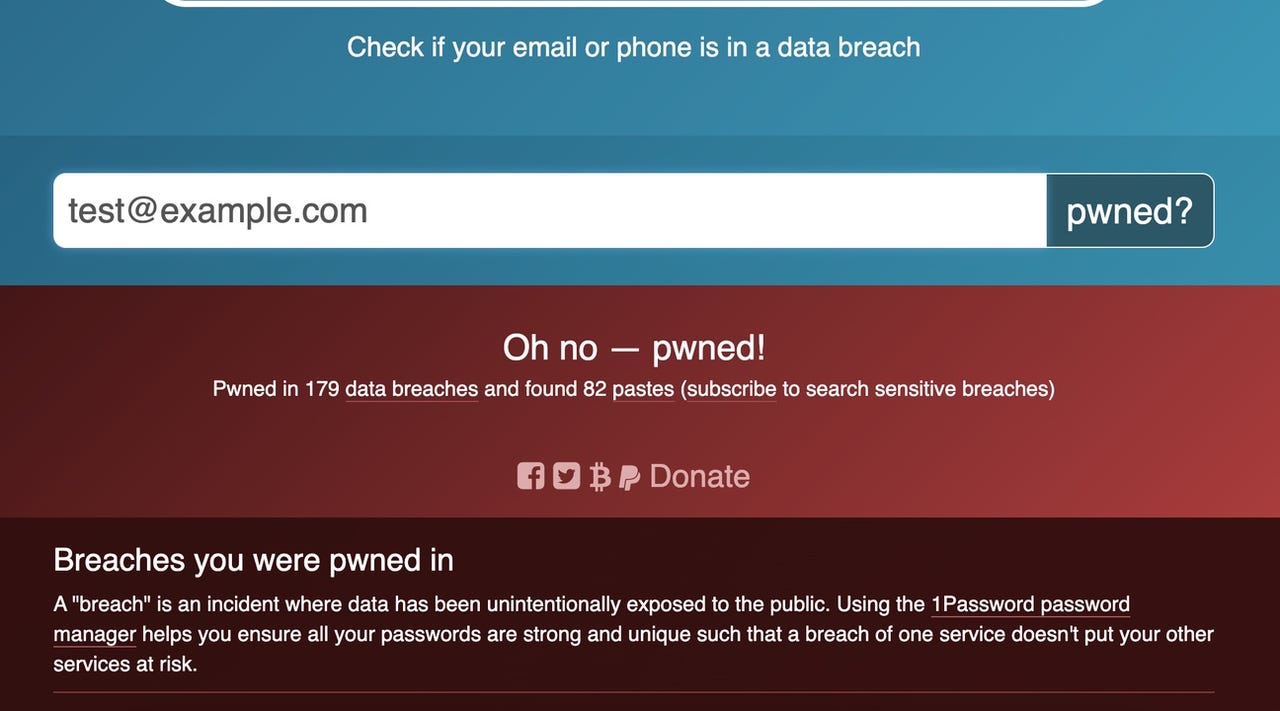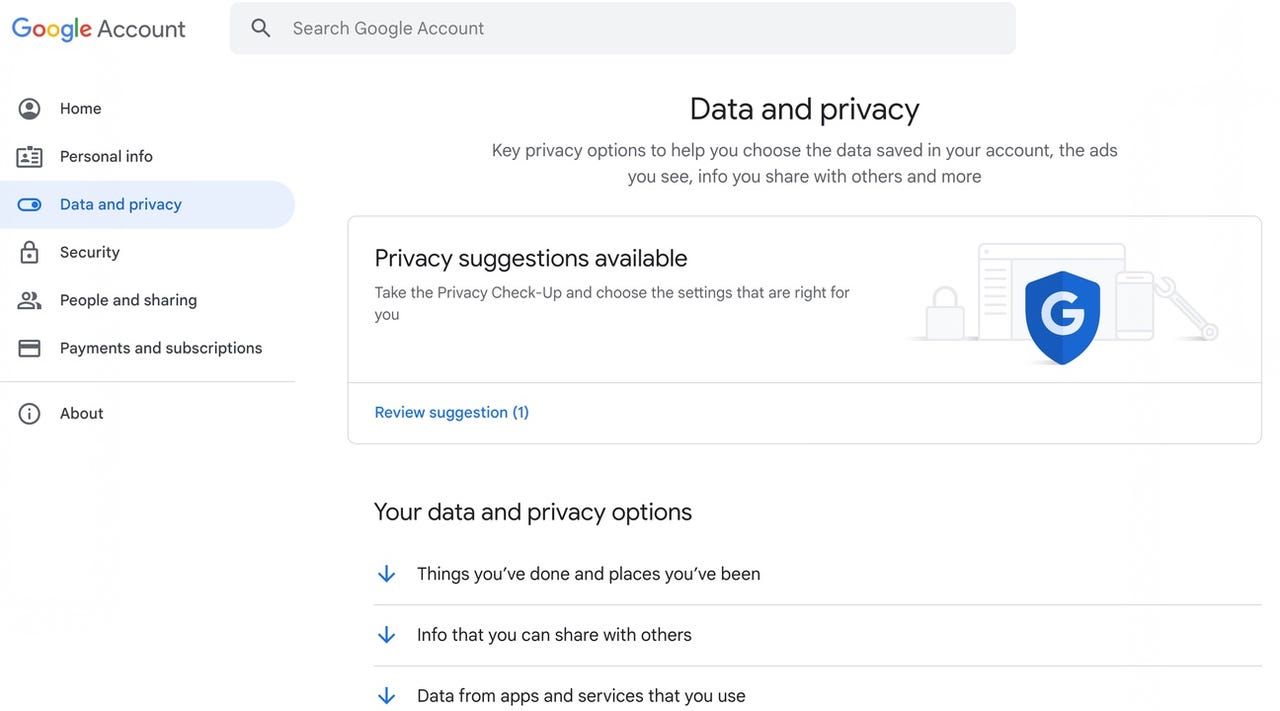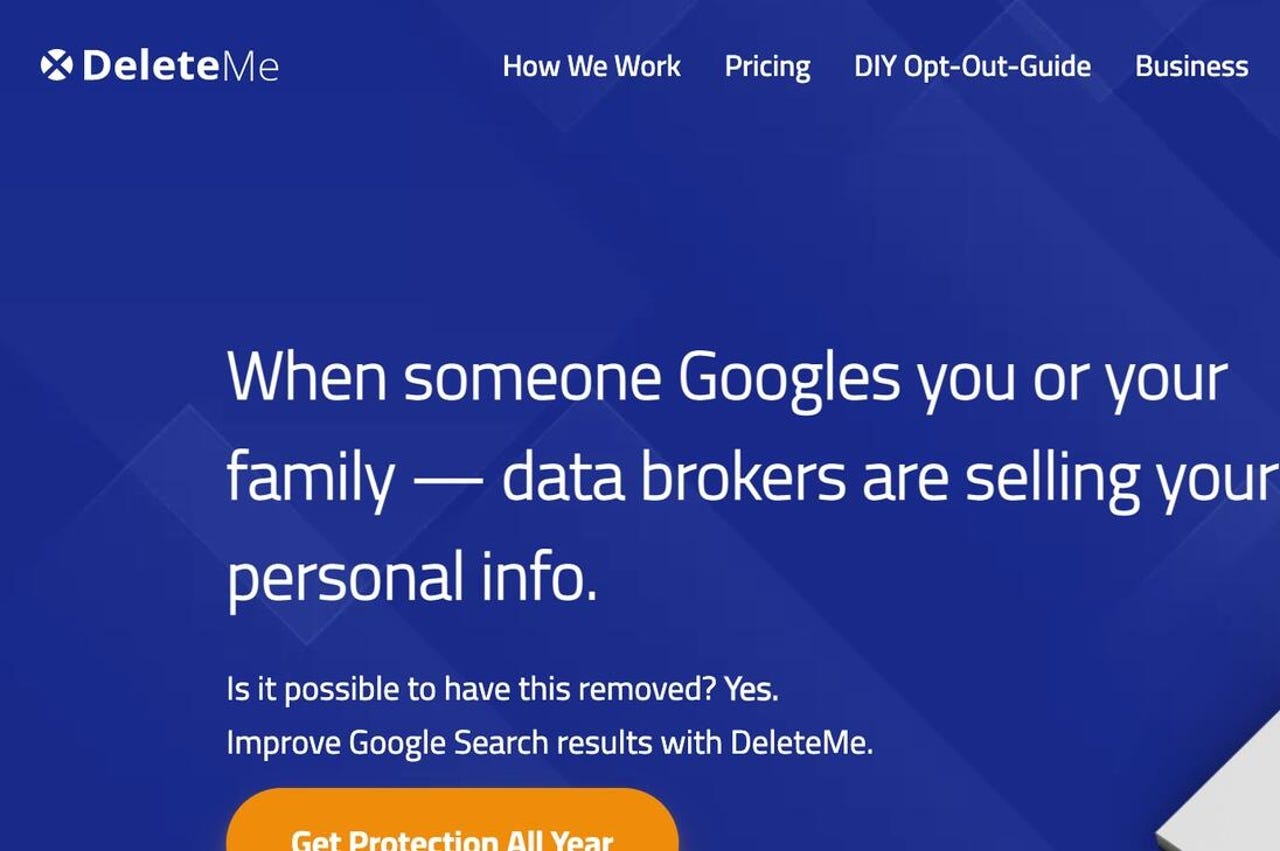Catchy, isn’t it?! If you haven’t heard about “the right to be forgotten”, today you will! European-established “Right to be Forgotten,” that serves as a legal framework for removing specific information from search results. The GDPR incorporates this principle and the phrase alone says it all for me!
Data privacy is a big deal. Our information is ours, or is it? When we are online, we leave a digital footprint. This is the information hackers look for. If you’d like to protect your information and go invisible for a while, this article in CNET by Charlie Osbourne is a great place to start!
1. Check Google and other search engines
The Google search engine, among others, is a double-edged sword: It provides links and website addresses to users in response to search queries, but unless the right controls are in place, your search queries can be cataloged for marketing purposes. Google can also be used to uncover exactly what information about you is in the public domain.
Not every search engine will reveal the same results. For a more comprehensive look, try out other search engines such as Bing.
Also: The best browsers for privacy (and why you should hide your online activity)
Once you know what is online, you can start tackling the problem. Run a quick search for your full name and note any website domains that flag you, social media account links, YouTube videos, and anything else of interest.
- Quick tip: To stop your search queries from being tracked, switch to DuckDuckGo. DuckDuckGo is a privacy-focused search engine that does not log your search queries.
2. See if you have the right to be forgotten
In the E.U., citizens can request the removal of information from Google search results. After filling in this form, requests are reviewed by Google employees on a case-by-case basis. You must provide the specific URLs you want to be delisted, and search queries related to these URLs, and you must explain why the tech giant should agree to your request.
“Broadly, the reviewer will consider whether and how the information may be in the public interest and weigh this against your rights under the applicable data protection law,” Google says. “There are several reasons why information may be in the public interest. As part of the balancing exercise, Google looks to a number of different sources, such as the guidelines developed by European data protection regulators.”
Also: How to find and remove spyware from your phone
Google may not accept every request to remove links relating to you. Reasons given for refusal include technical reasons, duplicate URLs, information deemed “strongly in the public interest,” and whether or not the content on a web page relates to professional lives, past convictions, work positions, or self-authored content.
At the time of writing (April, 2023), Google has received a total of just under 1.4 million delisting requests and around 5.4 million URL delisting requests.
If you are a resident of the U.S., or elsewhere, you may be able to request for limited information to be removed from search results, such as phone numbers or home addresses that could be used for identity theft and may have been leaked through doxxing.
3. Run your details through the Have I Been Pwned service
You can’t control your digital footprint without knowing where and what information concerning you is stored.
More importantly, you should know if your information has been leaked online, and when we have data breaches occurring daily, it’s more a question of what, not if.
Also: How to find out if you are involved in a data breach — and what to do next
The Have I Been Pwned service is run by cybersecurity expert Troy Hunt and can be a useful tool for discovering if any account information belonging to you has been compromised or included in a data breach.
If you find an email address or telephone number of yours has been “pwned,” check to see what data breaches you have become embroiled in, and make sure to change any vulnerable passwords as quickly as possible. You won’t be able to do much about the data leak itself, but this also could serve as a reminder of where you have opened online accounts.
Thankfully, many companies have now become aware of the issue and services including credit monitors and password vaults will often run periodic checks online for any compromised passwords. If they have been found, you should change them immediately.

4. Run a Google security checkup
Make sure to visit the Google Account page, where there are numerous settings that can boost your privacy, reduce data collection, or remove you altogether from the ecosystem.
- Privacy checkup: The Google Privacy checkup allows you to tell Google to stop saving search queries and your location history.
You can choose to disallow Google from saving web and app activities, Chrome history, YouTube logs, voice and audio, and other data. Google has also introduced an autodelete function for data stored. In this section, you can also choose whether or not to allow Google to use your information for tailored advertising, and what you want to happen to the data in your account if it goes inactive.
- Security checkup: The Google Security checkup can be used to show you which devices have access to your account, including laptops, PCs, and handsets. You can also find a list of any third-party applications that have been granted permission to access your account. Revoke permissions as necessary.
- Quick tip: If you have upgraded your phone, tablet, or another device recently and you no longer use your old one, you should make sure you sign out. It might not be likely, but if that device ends up in the wrong hands and is not properly protected, your account may become compromised.
- Delete me: Found under Account Preferences, Google’s deletion service can be used to delete select products or remove your account entirely. You can also download a copy of all your data.

5. Consider using a service to restrict data access to brokers
There are services available where you can pay to keep your information away from data brokers.
One example is DeleteMe, a paid subscription service that maintains tabs on data collectors and removes data such as names, current and past addresses, dates of birth, and aliases on your behalf.
This monitoring can keep your private information out of search results and away from platforms such as open people search databases.

6. Lock down your social media or delete accounts entirely
On Facebook
In the Settings tab, you can download all of Facebook’s information on you.
In the Privacy tab, you should restrict your posts to “friends only” and limit your past posts, and you can decide to disallow lookups by your provided email address or phone number.
Also: Turn off Facebook offline activity tracking
You also have the option to remove your Facebook profile from search engine results outside of the social networking platform. Under the Location tab, consider turning off location data collection by Facebook, too.
If you look at Apps and Websites, you can see what is connected to your Facebook account. If you choose to delete these, Facebook can also automatically remove posts, videos, and events the connected service posted on your behalf.
On Twitter (Now X)
Twitter also allows users to request its archive, which is all the information collected from you. This option can be found under the Settings and Privacy tab.
In the Settings area, you can choose to lock down your account and make tweets private by choosing to “protect your tweets.” You can also turn off tweets containing location data, decide whether or not to allow email and phone number searches to connect others to your profile, and choose whether to allow others to tag you in photos.
Under the Safety portion of the tab, you can prevent your tweets from appearing in the search results of blocked users. You can also deactivate your account entirely.
On Instagram
Facebook-owned Instagram has a number of privacy settings you can also change to maintain an acceptable level of privacy.
By default, anyone can view your photos and videos on your Instagram account unless you are a minor, in which case your account should be private by default. However, by going to your profile, clicking Settings, Account Privacy, and switching “Private account” on, you can make sure your content is only viewed by approved users.
7. Consider deleting your social media accounts
Remove everything: A more extreme option is to delete all of your primary social media accounts completely.
On Facebook, you can go to Settings & Privacy, then Settings, select Your Facebook Information, and click on Deactivation & Deletion to deactivate it. This gives you the option to return at a later time and does not delete your data. Your settings, photos, and other content are saved, but your Facebook presence will not appear beyond unclickable text.
You can also permanently delete your account. If you have trouble finding this setting, you can type “delete Facebook” in the Help Center tab.
Also: How to delete your Twitter account and protect your data, too
You are given a grace period to change your mind and log back in. It can take up to 90 days before the deletion of content on your Facebook wall and in your account will begin.
To deactivate Twitter, you need to click on Settings and privacy from the drop-down menu under your profile icon. From the Account tab, you can then click deactivate.
To delete your Instagram account, log in and go to the request deletion page. Once you have submitted an answer as to why you are deleting your account, you will be prompted to re-enter your password, and then a delete account option will appear.

Image by Gerd Altmann from Pixabay
8. Remove old accounts and blog posts
Is it really necessary to preserve what you had for breakfast one morning in 2017 or your review of a now-defunct retail shop near you? No.
Time and effort are required to comb through old posts, but the result is worth it, and this may also train you to be more selective about the information you share in the future. Unless the account is one you use frequently, consider deleting it permanently. It is a pain to find, remember credentials, and recover passwords associated with old accounts, but this is an important step in locking down your data.
To find your old accounts, visit Have I Been Pwned, check the lists of connected apps in your Facebook and Google accounts, and, if you have a password manager, check it for the credentials of accounts you have used since signing up.
You may have to manually log in to each account you want to remove and, depending on the service, delete your info from there or contact the service provider with the request.
Justdeleteme.com is a helpful directory containing guides to removing accounts from countless online services and a rating on how hard each type of account is to remove, ranging from “easy” to “impossible.”
9. Hide yourself
If you cannot delete online accounts outright and can only deactivate them, before you do, delete as much content from them as possible. If the account is no longer relevant to you, consider changing the name and personal details connected to it, as well as removing or changing photos to generic alternatives.
When it comes to active accounts such as on Facebook or Twitter, anonymity or aliases can help keep your digital and physical presence separate.
Also: What is an IP address and how do you change it with a VPN?
It is against most terms of service to not use your full, correct name, but it is still common practice for many to change their surname at the least to prevent work and personal accounts — and lives — from colliding. You can also delete personal photos and change them to something that doesn’t identify you.
9. Can VPNs help protect my privacy?
A virtual private network (VPN) can mask your IP address and create a private tunnel between yourself and online services. Data and communication packets sent between a browser and servers are encrypted, which can prevent eavesdroppers from harvesting your information or tracking your online activity.
There are services out there that are both subscription-based and free. It is generally better to sign up for a paid VPN service if you can — no VPN service is truly “free” given the cost of creating and maintaining the infrastructure required to route traffic. Therefore, your data may be used or sold to third parties in return for VPN services.
Nord is what I use as my VPN. If you’re interested, here is a link for NORD (you’ll receive a free month)!
Another way to keep your digital footprint clean of debris is to separate online services between email accounts. If you need to provide an email address for a one-off purchase, for example, consider using a junk email address — which will quickly become full to the brim with promotional material but will keep your primary email address from being added to more marketing databases.
For example, you could set up two Gmail accounts, one as a primary and one as a delegate for spam and potential junk.

Image by Werner Moser from Pixabay
Look After You!
Do yourself a favor and see where you show up online. This takes a few minutes and is well worth it.
Is what you see about you accurate? Personal protection goes hand in hand with the right to be forgotten philosophy.
Prying eyes love to access you, it is best to be forgotten than risk being hacked! Send me an Email or Message to discuss further. For additional information about DIY options or my work check out @ The Living Planner or @ The Living Planner.
Happy week ahead! “Do one thing every day that scares you.” -Eleanor Roosevelt❣️Lynn

